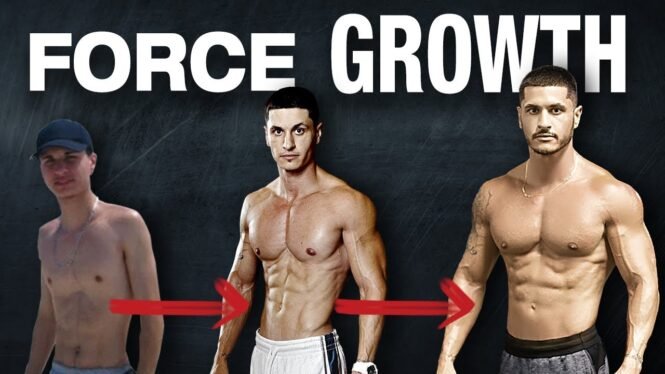Looking to take your muscle growth to the next level? If you’re tired of the slow progress and want to see significant gains, it’s time to incorporate some advanced methods into your muscle-building routine. In this blog post, we’ll explore seven effective techniques to force muscle growth and help you achieve the results you’ve been working hard for. From nutrition to training strategies, we’ve got you covered with proven methods that will take your gains to the next level. So, let’s dive in and start maximizing your muscle growth potential!
How to FORCE Muscle Growth (7 ADVANCED METHODS)
Introduction
When it comes to muscle growth, many people think that adding weight to the bar is the only way to progress. However, this is not entirely true. While progressive overload is an essential component of any training program, there are other techniques to progress besides adding weight. In this article, we will discuss seven advanced methods that you can use to force muscle growth.
1. Getting Stronger is Key to Muscle Growth
Before we dive into the advanced methods, it’s important to understand that getting stronger is key to muscle growth. This is because the more weight you can lift, the more stress you can place on your muscles.
2. Progressive Overload is Important in Any Training Program
Progressive overload is the gradual increase of stress placed on the body during exercise. This can be achieved by increasing weight, reps, sets, or decreasing rest periods. It’s essential to include progressive overload in any training program to continue making gains.
3. Adding Weight to the Bar Does Not Equal Progression
While adding weight to the bar is one way to progress, it’s not the only way. You can make progress by increasing reps or sets, decreasing rest periods, using a slower tempo, or varying the exercise angle.
4. Other Techniques to Progress Besides Adding Weight
Other techniques to progress include incorporating different training methods like drop sets, supersets, or rest-pause sets. These methods increase the volume and intensity of your workouts, ultimately leading to muscle growth.
5. Other Progression Techniques Help When Adding Weight to the Bar
When you’ve hit a plateau in your program, other progression techniques can help you break through. One such technique is using partial reps at the end of your set after you reach failure with full reps.
6. Video Covers Volume and Intensity Balance
Finding the right balance between volume and intensity is crucial to achieving muscle growth. While volume represents the total amount of work performed, intensity refers to the weight lifted. In this video [insert link], we discuss how to balance volume and intensity for maximum gains.
7. Recommended Training Frequency for Maximum Gains
To achieve maximum gains, it’s recommended to work each muscle group twice a week with high volume and moderate intensity. This allows for enough recovery time between workouts while still providing enough stimulus for muscle growth.
8. Tips on How to Increase Training Density
Training density refers to how much work you can perform in a given amount of time. To increase training density, reduce rest periods between sets, and focus on compound exercises that target multiple muscle groups.
9. Beyond Failure Training Techniques Discussed
Beyond failure training techniques, like forced reps and negative reps, can help you push past plateau and stimulate muscle growth. However, it’s essential to use these techniques sparingly and have a spotter present.
10. Citations Supporting Muscle Hypertrophy Through Resistance Training
There is a significant body of research supporting the use of resistance training for muscle hypertrophy. One study [insert citation], found that high-intensity resistance training led to increases in muscle fiber size and strength.
Conclusion
In conclusion, adding weight to the bar is not the only way to progress in your training program. Incorporating advanced methods like drop sets, supersets, and beyond failure techniques can help you break through plateaus and force muscle growth. By finding the right balance between volume and intensity and using progressive overload, you’ll be on your way to achieving your muscle-building goals.
FAQs
-
Why is getting stronger key to muscle growth?
Answer: The more weight you can lift, the more stress you can place on your muscles, leading to muscle growth. -
Can you make progress without adding weight to the bar?
Answer: Yes, you can make progress by increasing reps or sets, decreasing rest periods, using a slower tempo, or varying the exercise angle. -
What is progressive overload?
Answer: Progressive overload is the gradual increase of stress placed on the body during exercise. -
How often should I work each muscle group for maximum gains?
Answer: It’s recommended to work each muscle group twice a week with high volume and moderate intensity. -
What is training density?
Answer: Training density refers to how much work you can perform in a given amount of time.



